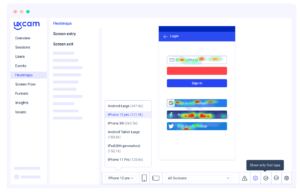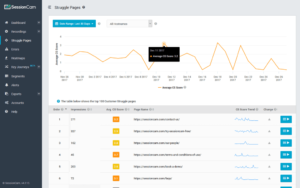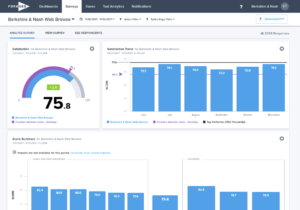Expanding your methods for gathering and analyzing customer data can help you learn more about your customers, clients, and prospects to improve their user experience with your brand. While common website analytics platforms such as Google Analytics can effectively surface data around what is happening across your digital experience, it struggles to provide insight as to why. To efficiently gather information on how to improve your user experience, a different set of tools is required. The five following methodologies and platforms can help you quickly gather deeper user insights that reveal gaps or friction points across your experience.
Review Session Data
Session recording platforms let you watch a screen recording of anonymized visitor sessions so you can see what people are doing on each page of your site or across your mobile experience and observe how they behaved before abandoning. These platforms can be setup and integrated quickly and offer a variety of tools to pinpoint key issues throughout the digital experience. Key features that can offer valuable insights include:
Session Recordings – Allows marketers to record and replay user sessions to see exactly what they see as they interact with a website desktop or mobile.
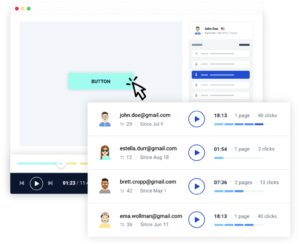
LiveSession’s Session Recordings
Heatmaps – Heatmaps can provide visual insights to improve the customer experience for customers and prospects.
Rage and Error Clicks – Rage clicks track when users click on something repeatedly indicating frustration with the experience. Error clicks, on the other hand show where there are technical issues like broken links, etc. Looking at this data allows marketers to identify areas to improve the experience for their users.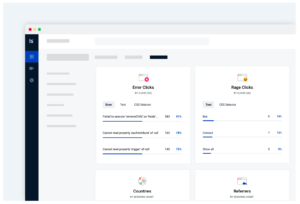
Struggle Detection – Struggle detection leverages AI to pull together hundreds of session replays to identify common user issues. This allows marketers to more quickly identify and address issues.
Many of these session recording platforms take qualitative user interaction data (i.e., recorded user sessions) and use AI to visualize or quantify the user interactions into an easy-to-use interface that allows marketers to quickly pinpoint problems in the experience.
Gather Feedback
Setting up on-page feedback polls lets you hear directly from your users and customers, so there’s no guesswork in trying to figure out why they’re leaving. In addition, it allows marketers to learn about their customers’ interests and preferences to customize and personalize campaigns. To get at this data ask simple, open-ended questions, such as:
– What’s missing from this page?
– What’s stopping you from continuing?
– What were you looking for?
– How can we help you through the checkout process?
Surveys are a go-to for savvy marketers and continue to be a valuable source of qualitative data. Research done by Capterra in early 2020 revealed that only about 5% of marketers used survey software for studying customer behavior in 2015, while in 2020 the number of marketers using surveys has increased to 73%.
On-Site Search Query Mining
Your on-site search is an incredible listening tool and gives you a view of what your customers want from your site. By drilling into search queries, you can identify what your customers can’t find or potential user experience issues.
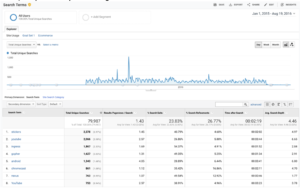
If you leverage Google Analytics you can turn on site search tracking to start gathering and analyzing this user data. The types of searches people conduct on your site can tell you a lot about how they are interacting with your site and potential friction points. An example would be if you sell home improvement products, and you get a significant amount of site searches for “sprinkler heads.” Your navigation lists “Irrigation” but the high rate of search queries could indicate an ineffective navigation path. This presents an opportunity to test out more user-friendly navigation language that enables users to more quickly find what they are looking for.
Analyze Social Media Sentiment
Sometimes great insights on your digital experience can come from sources outside of the experience. Social sentiment analysis is a technique through which you can analyze words to determine the sentiment behind it. It combines machine learning and natural language processing (NLP) to achieve this. There is a lot of text feedback out on the web about your brand and understanding the sentiment behind it will give you valuable insight into what your customers and prospects really think of your brand and where you can focus on improving their experience. There are a couple of ways to dig into sentiment analysis:
Advanced Analysis
Leverage the Twitter API and Python (an open-source, versatile coding language) to do a sentiment analysis of tweets about your digital experience. This type of analysis is a way to “computationally” determine whether a group of similar tweets are positive, negative, or neutral. To fetch tweets through the Twitter API, one needs to register an App through their Twitter account and leverage a Python library for processing textual data like TextBlob.
Sentiment Analysis Platforms
Don’t know Python? Try one of the Social Media Sentiment Analysis platforms like Keyhole. If you don’t have a full data science team to analyze and report on every online conversation, you can leverage platforms that offer out-of-the-box reporting and analysis to gain insight into what is being said about your brand.
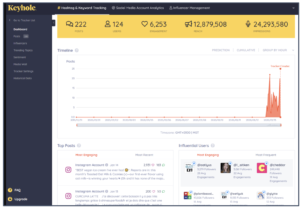 Keyhole’s Social Listening Platform
Keyhole’s Social Listening Platform
Analyze Voice of the Customer (VOC) Data
Similar to analyzing social media sentiment, you can leverage Python to prepare and analyze any voice of the customer data. If you can access the data no matter if it is call center transcripts, survey data, online reviews, etc. it can be used for sentiment analysis.
There are also platforms such as Nice Satmetrix purpose-built to transform your text data into actionable stories that will help you identify customer pain points and improve customer experience.
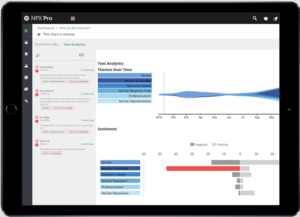
NICE Satmetrix’s Text and Speech Analytics



